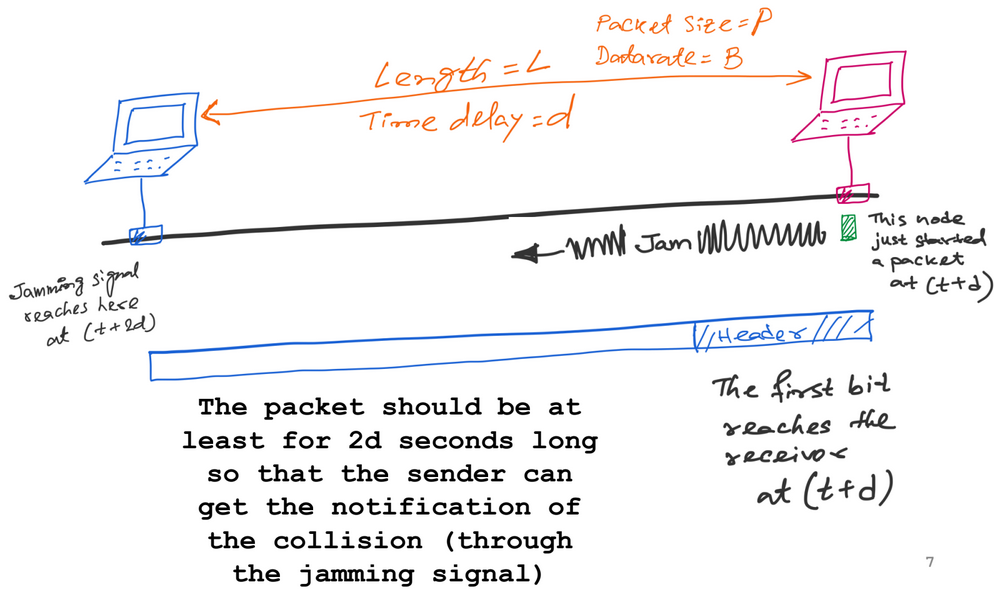CSMA is a Multi-Access Protocol
Carrier Sense Multiple Access (CSMA) is like human conversation:
- Carrier sense:
- Listen before speaking and don’t interrupt
- Collision detection:
- Detect simultaneous talking and shut up
- Random access:
- Wait for a random period of time before trying to talk again
- -persistent CSMA - if channel is idle, transmit the frame with probability
But collisions can still occur
- Wasted transmissions
Collision Detection
The “CD” part of CSMA/CD
- Collision happens when two packets overlap at receiver
Note
Worst-case scenario of collision:
- Two farthest nodes in the LAN
- Transmission time should be greater than or equal to
2 * propagation timefor CSMA/CD to work - Formula for minimum packet size (P) or maximum length (L):
- , where is the speed of propagation

- When receiver detects collision
- Stop sending
- Send jamming signal to ensure collision detection by all nodes in the link
CSMA for WiFi
802.11 does Collision Avoidance, but cannot do Collision Detection because of these two problems:
- Cannot detect all collisions
- Hidden terminal problem
- Happens because 802.11 uses physical carrier sensing, which is susceptible to the hidden terminal problem
- Virtual Carrier Sensing can help with that
- Signal strength fades over distance
- (see WiFi Broadcast Limitations for more info)
- Hidden terminal problem
- Cannot listen while sending
- Strength of received signal is much smaller
- Expensive to build hardware that detects collisions